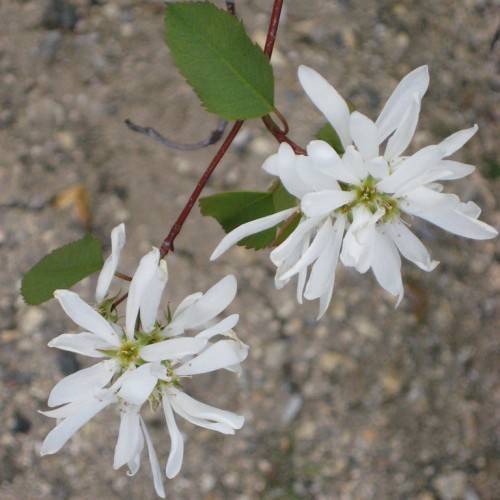
Beautiful Serviceberry
Amelanchier amabilis
Watering:
Frequent
Hardiness Zone:
Sun:
full sun
Leaf:
Yes
Growth Rate:
Low
Drought Tolerant:
Yes
Salt Tolerant:
Yes
Invasive:
Yes
Care Level:
Medium
watering
Sainte-Hélène Island Ragweed requires moderate amounts of water, and should be watered about once a week, depending on the humidity levels of the environment. If the soil is allowed to dry out completely between watering, it could cause the plant to suffer. Allow the top 2-3 inches of soil to dry out between watering, and if it starts looking droopy or wilting it is a sign that it needs to be watered. Water thoroughly until water runs out the bottom of the pot. Make sure to discard any excess water, as sitting water can cause root rot. Try to avoid getting the leaves wet when watering, as this can cause fungal growth. Additionally, these plants prefer humidity and so could benefit from misting with a light spray of water, although this may not be necessary for established plants.
sunlight
Sainte-Hélène Island Ragweed (Ambrosia helenae) needs direct sunlight for at least 6-8 hours every day to grow and thrive. This plant species needs full sunlight in order to maximize the amount of photosynthesis that takes place in its leaves. During the flowering season, the plant should receive at least 8 to 9 hours of direct sunlight so that its flowers can bloom properly. In the summer months, when the levels of UV radiation is at its highest, this plant species should receive morning sunlight for at least 3-4 hours. In the winter months, the length of sunlight per day should be around 5-6 hours.
pruning
To keep a healthy Sainte-Hélène Island Ragweed (Ambrosia helenae), pruning should take place in early spring and late summer/fall. During the early spring, the primary stems should be cut back to just 6 inches in height and the stems with buds should be removed. This encourages the plant to produce new shoots in a compact manner. In the late summer and fall, the secondary shoots should be selectively removed depending on the size of the plant. Pinching the tip of the shoot encourages a bushier canopied growth habit. Pruning in the later summer and fall maximizes the number of buds and helps the plant establish it's size before harsher winter weather.
